Geology of Ustica

| Chris Caravella's Virtual
Tour of Ustica
Geology of Ustica |
 |
| Wow! This is another cool depiction of the island. You can really see the rims of what remains of the volcanic craters that formed Ustica. The portion to the right of the island appears to have been blown away during one of the later eruptions. The last eruption was about 150,000 years ago. The island has since been eroding around the neck, that dense column of rock that plugged the volcano after one of its eruptions. The left portion of the island is the smooth layers of lava that spewed out from the volcano and into the sea. |  |
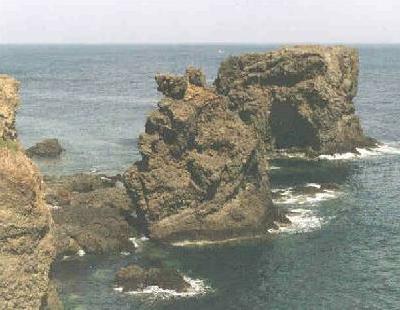
Nerone to the front and Colombaro to the back are two necks or plugs to the core of one of the eruptions. They lie just offshore from Faraglioni. We actually climbed atop Colombaro and found pottery shards from when Faraglioni extended across this area. |
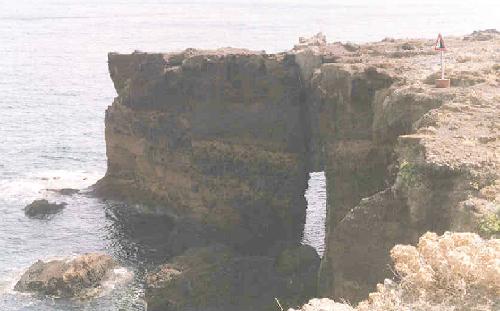
Radiating out from the neck of the volcano are huge cracks called dikes. Like the neck, they fill up with more dense lava and solidify. The bottom portion of this dike has collapsed into the sea. |
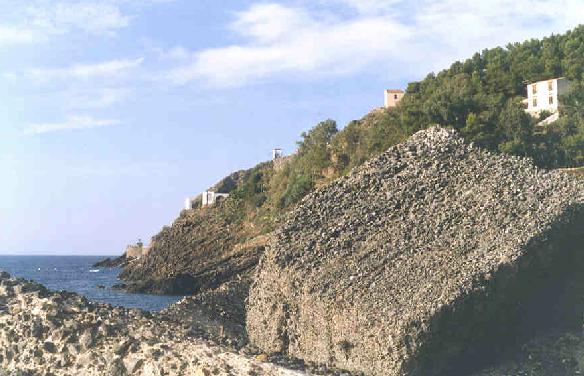
The rocks surrounding town are called tuff. It looks a lot like
cement but is actually a mix of ash and debris ripped up by a violent eruption.
This is a view looking west from the port. Further up this coast
toward the desalination plant at Spalmatore (yep, that's where the drinking
water comes from), layers of fossilized seashells are intermixed with the
tuff. These beach layers were frozen in time between eruptions.
|
A large shelf of tuff overhangs a road near the
port. The view of the sea and dramatic terrain makes a perfect spot
for tucking in a house.
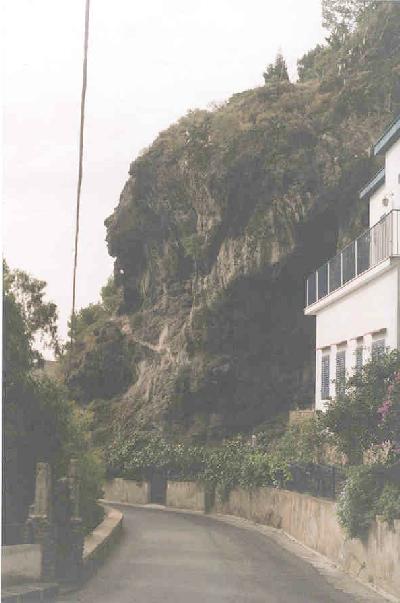 |
 |
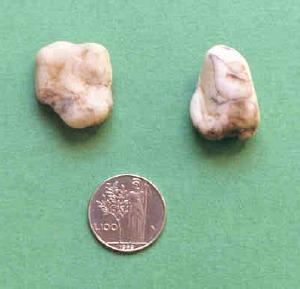
Quartzite nodules found at Cala Sidoti are ripped up from deep in the earth. The chemistry of the nodules indicates that they are from the same rock that make up the Apennine mountains running the length of Italy's boot. |
| Along the western coast, the rock chemistry changes. Here the rocks are dark dense basalt with lots of pores formed from gas trapped in the lava. The eroded pores give these rocks their craggy appearance. Basalt indicates a gentle flow of lava spewing from the volcano. There are three distinct flows in this photo. Can you make them out? | 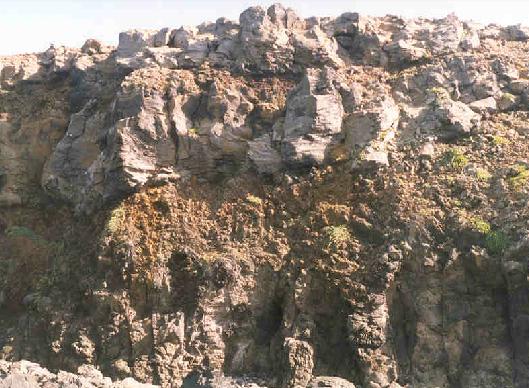 |
[Panorama] [Welcome] [Map] [Faraglioni] [Falconiera] [Culunnedda] [Baseball Field] [Santa Maria Tower] [The City] [Spalmatore] [The Grottos] [The Old Town] [The Cemetery] [The Back Dock] [Tramontana] [Pass of the Madonna] [Chapel of San Bartolicchio] [Geology of Ustica] [Plan a Trip]